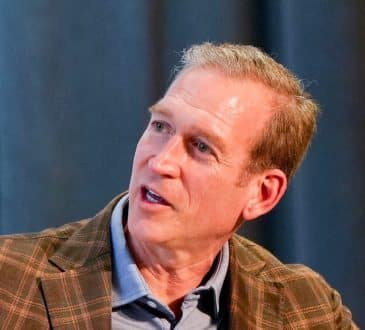The Importance of Radical Transparency in Leadership

Radical transparency: It’s a philosophy that’s grown in popularity over the years, one that encourages leaders to increase their openness about everything from organizational strategy and processes to financial data. As a CEO, I’ve always viewed true radical transparency as the level you reach when you go beyond what feels comfortable. Stretching your boundaries to the point where you think, “maybe this is too much information…” That’s how you know you’re heading in the right direction.
In a new age of remote teams, practicing and maintaining radical transparency has never been more important.
When you advance to an executive-level position, your title tends to indicate what you are. Assigned to your authority, it can become a blinder that employees focus on, and one that puts up unintentional barriers. By actively exercising radical transparency, however, executives can gain and uphold an earned respect, instead of relying on the reverence that their title demands. Radical transparency starts to show who you are, your values, your insight, and what others can learn from you. That earned respect creates a waterfall effect for the rest of your leadership team, and subsequently their own teams, to learn from and adapt themselves.
After an unprecedented year, pivoting how you lead and embrace a remote workforce is critical.
In addition to being proactive about our communication and rapidly altering our rhythms of business to meet the unforeseen demands brought on by the pandemic, I worked closely with our partnership shareholder group to ensure we were not only echoing the same messages but that our follow through and actions were in sync. This alignment is a fundamental step to ensure the messaging is trusted.
In a digital workplace, with the lack of face time with your peers every day, it’s easy to let communication slip and allow gaps to develop. We became rigorous with holding one another accountable through consistent, standing executive check-ins, and set up an internal adaptive response team to help us maintain that communication cadence with the rest of the firm. We weren’t just communicating policy. We were sharing what we knew, what we didn’t know, what we were experiencing, and what we were feeling. All with the intent of conveying a spirit of “we are in this together.”
We’ve used creative ideas to make sure our teams are getting information in a timely way. Tools like Slido have allowed us to poll our employees on their feelings and status, as well as anonymously ask hard questions in real-time during all-hands meetings, further establishing that much needed fundamental transparency. The sharing embraces that it is okay during these challenging times to not be okay; to be experiencing personal difficulties with the changes to our lives.
Lean on your executive teams and board of directors for ideas, advice, and accountability assurance.
As leaders, we have a responsibility to put our best foot forward and proactively set an example for our employees. But achieving this requires the cohesive partnership of the right team and a unified approach that’s composed of equal parts focus and fun, and that lets us translate and overcome the tensions across our various roles. By continually challenging one another and shining a light on what we can improve on, we become more effective not only at regularly having the hard conversations, but sharing and acting on the results with the rest of our firm.
The company-wide response you’ll see from leadership’s candor might surprise you.
Modeling leadership behavior in our interactions with employees is crucial. A lot of companies will promote the idea of being “one big happy family”, which on the surface sounds appealing. However, when everyone is compelled to agree with one another, it deters the exploration of diversity in ideas and perspectives that would elevate the intellect of decision making. Good ideas can come from anywhere, and promoting the illusion that everything is already the best it can be creates unintentional barriers and an exclusive culture that prevents employees from expressing their honest thoughts, opinions, and ideas.
When people are part of a culture where they don’t feel like they have to conform, they’re empowered to speak their minds and be their true selves. This top-down, value-driven candor unleashes an emboldening of company-wide authenticity and camaraderie that can open pathways for diversity, innovation, and a sense of ownership.
As the difficult decision of forthcoming layoffs and reduced hours were being relayed to staff, we were humbled when numerous employees steped up to see how they could help their colleagues. From those who volunteered to retire early or voluntarily take time off, to those who offered to share their work and benefits with others; it was an unexpected outpouring of solidarity that transparency and candor helped spur, and was a fundamental expression of the trusting team spirit we have built in our firm.
By leading with the mentality and approach we expect from others, leaders can encourage employees to challenge one another in healthy ways that result in new, truly transformational ideas.
Be comfortable taking the risk.
In my time as a leader, I’ve never experienced a moment where I’ve regretted over-communicating with my team or the firm. As financial situations rapidly changed through the early months of the pandemic, hard decisions had to be made. MG2’s leadership team was as transparent and forthcoming about these actions as possible with everyone in our firm.
Seemingly small things, like sharing the agenda of the annual leadership meetings to the whole firm allows everyone to feel engaged and part of the team and invites them into the conversation about what’s next for the firm.
Having the confidence to treat all your employees with that level of trust can be intimidating. It’s easy to get caught up asking yourself questions like, “What if they don’t understand the numbers and misinterpret what I mean?”; “What if confidential information is shared?” In the end, the reciprocation we experience from radical transparency is worth breaching the fear.
The first step, and possibly the hardest one as an executive to take, is to embrace the ability to admit what you don’t know. The reality is, people get bored with hearing what you know. In the current environment, it can often not be trusted by itself. Eventually, the communication dissolves into a one-way conversation, with leaders talking at their teams.
By admitting what you don’t know, and being candid about it, the playing field levels. Executives become more human, more approachable, more trusted, and the barrier lowers. The conversation evolves and opens up, giving employees the confidence to embrace that they themselves don’t have to know everything.
Radical transparency encourages a culture of asking questions, one of constant learning and pushing boundaries, and ultimately, learning, advancing, and innovating together.
Written by Mitch Smith.
Bring the best of the CEOWORLD magazine's global journalism to audiences in the United States and around the world. - Add CEOWORLD magazine to your Google News feed.
Follow CEOWORLD magazine headlines on: Google News, LinkedIn, Twitter, and Facebook.
Copyright 2025 The CEOWORLD magazine. All rights reserved. This material (and any extract from it) must not be copied, redistributed or placed on any website, without CEOWORLD magazine' prior written consent. For media queries, please contact: info@ceoworld.biz








